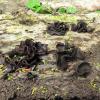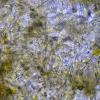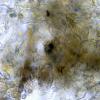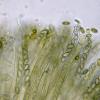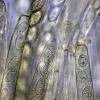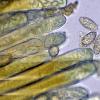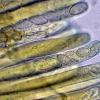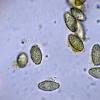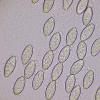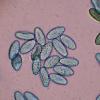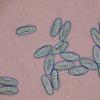
09-12-2025 12:06
 Andgelo Mombert
Andgelo Mombert
Bonjour,Je recherche l'article concernant Hypobryo

07-12-2025 16:07
Arnold BüschlenHallo, ich habe in einer Moos-Aufsammlung (epiphy

08-12-2025 21:04
Mark Stevens"Hello everyone,I'm relatively new to microscopy (

08-12-2025 18:59
 Lothar Krieglsteiner
Lothar Krieglsteiner
.. found by a seminar-participant, I do not know t

08-12-2025 17:37
 Lothar Krieglsteiner
Lothar Krieglsteiner
20.6.25, on branch of Abies infected and thickened

16-03-2014 22:00
Hello,I found this species a few months ago but ha

08-12-2025 13:39
Thomas Læssøehttps://svampe.databasen.org/observations/10572899
¿Pachyella?
Josep Torres,
22-05-2025 08:55
A Pezizal sprouting scattered in small groups on the peeled surface of a trunk lying on the ground in a fluvial forest next to a stream, with specimens deformed by pressure between them.
Ascomata of considerable size, some exceeding 4 cm, brown with faint violet hues, not exuding any latex upon contact or injury, and of fragile consistency.
Hyphae of the medullary exciple are filamentous, with an intricate texture and some very evident swellings.
Beneath these, other hyphae are more globose and larger.
Octosporic asci with only a slight, very diffuse amyloid reaction to Melzer.
Ellipsoidal ascospores decorated with obvious warts, very visible in Cresyl Blue, with spore measurements obtained by natural sporulation and in water of:
(19.3) 19.9 - 22.5 (23.8) × (9.8) 10.1 - 11.1 (11.4) µm
Q = (1.7) 1.9 - 2.2 (2.3) ; N = 40
Me = 21.2 × 10.6 µm ; Qe = 2
If for any reason you need more images, just ask.
Considering its lignicolous habitat and the diffuse amyloid reaction of the asci to Melzer, I think of Pachyella, but without any conviction. It's even possible that I had studied this species before, but I can't remember and I'm completely stuck. Any feedback from you will be appreciated.
Thank you very much in advance.
Best regards.
Marek Capoun,
22-05-2025 17:04

Re : ¿Pachyella?
Hello, Josep,
I would probably look in the genus Phylloscypha.
Marek
I would probably look in the genus Phylloscypha.
Marek
Nicolas VAN VOOREN,
22-05-2025 17:22

Re : ¿Pachyella?
Marek is right.
Josep Torres,
23-05-2025 07:44
Re : ¿Pachyella?
Thank you both very much.
Of course, Phylloscypha, and most likely Phylloscypha phyllogena. I rightly mentioned in my post that I didn't rule out having studied it before. I've studied Phylloscypha phyllogena on a couple of occasions, and in both cases, it grew in the soil. In addition to the more pronounced amyloid reaction of its asci, the fact that it appeared directly on the wood confused me greatly. Based on this fact alone, I ruled it out from the start.
Best regards.
Of course, Phylloscypha, and most likely Phylloscypha phyllogena. I rightly mentioned in my post that I didn't rule out having studied it before. I've studied Phylloscypha phyllogena on a couple of occasions, and in both cases, it grew in the soil. In addition to the more pronounced amyloid reaction of its asci, the fact that it appeared directly on the wood confused me greatly. Based on this fact alone, I ruled it out from the start.
Best regards.

